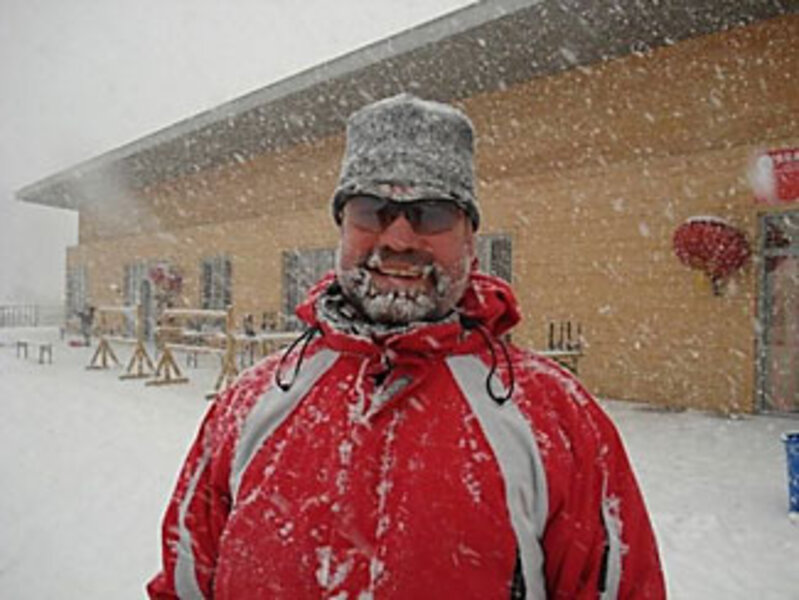Skiing 'with Chinese characteristics?'
Loading...
Of all the unexpected lessons I have learned about China since arriving here two years ago, one of the most gratifying is that you can ski here.
Skiing is perhaps my most prized pleasure; one of the luxuries of my last posting in Paris was to spend a winter week in the Alps descending – generally rather inelegantly – some of the world's most spectacular slopes.
Hebei, a hilly province northwest of Beijing, is not the Alps. It doesn't snow here often, one of the first aspects of "skiing with Chinese characteristics" that you must appreciate: The runs are generally covered with artificial snow.
Hebei is dry at the best of times, as Beijing drains much of its water. This winter, it is undergoing its worst drought for 50 years, and I can only imagine what local farmers think about using scarce water to make "snow" for wealthy madmen to slide down. (The Chinese term for "to ski," by the way, is to "slide snow.")
As if to remind you how environmentally unfriendly you are being by skiing here, the pistes are often a pale beige, regularly dusted as they are by fine sand blown in from the nearby Gobi Desert.
My conscience was assuaged, however, and my eyes delighted, by a heavy snowstorm while I was skiing last week at the Wanlong (10,000 Dragon) resort, which is less than a decade old. The hills were blanketed by fresh, natural powder, though it was unclear how naturally it had fallen: The government has been seeding clouds over Hebei with silver iodide pellets to provoke precipitation.
Wanlong's planners do what they can to convince you that you are in the Alps: At the top of one chairlift, for example, is a rustic Swiss chalet, built from pine trunks, that serves as a cafe-cum-restaurant.
Walls decorated with photos of Alpine meadows, however, are not enough to distract your attention from the incongruous red Chinese lanterns hanging from the rafters, nor the pots of plastic peonies, nor the Buddhist prayer flags fluttering from a pile of stones outside the window.
Neither has any mountain restaurant where I have ever eaten in the Alps served steamed pork-and-leek dumplings.
The slopes, meanwhile, were unexpectedly long and enjoyable and varied, not to mention empty, since I was skiing midweek after the Chinese New Year holiday. My apprehensions about the reliability of Chinese ski lifts proved unfounded: At a resort in the other side of Wanlong's mountain, opened this season by an Italian firm, the chairlift is state of the art (imported from Italy), while Wanlong's lifts seem just as good as your average Alpine system (and without queues).
The snow-packing machines also looked as if they had been imported from Europe, but this being China, drivers had no compunctions about working on slopes where people were skiing. And this being China, where manpower is not a problem, the giant machines were augmented by some 50 men and women with shovels, digging and shaping the runs' edges.
If this had been the Alps, such workers would have learned to ski as toddlers. But skiing is an alien sport, and locals scoff at the weird ways of outsiders.
When their shift was over, the workers simply put their shovels between their legs, grasped their handles, and sat down on their broad blades. One by one, they rocketed down the slope in line on their makeshift toboggans.
Next year, maybe I won't bother to ski; I'll just rent a shovel.





